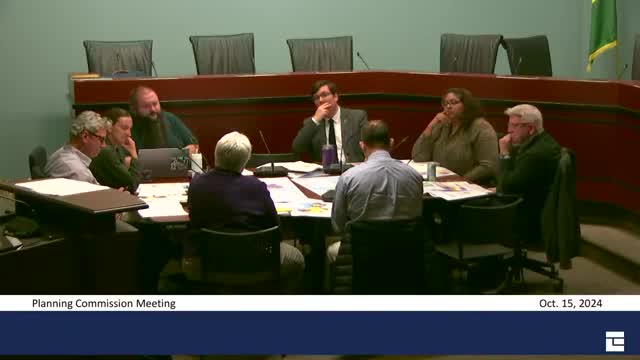Neighborhood zoning changes spark debate over safety and access
October 15, 2024 | Everett, Snohomish County, Washington
This article was created by AI summarizing key points discussed. AI makes mistakes, so for full details and context, please refer to the video of the full meeting. Please report any errors so we can fix them. Report an error »

During a recent government meeting, officials discussed significant changes to neighborhood zoning regulations aimed at enhancing community safety and property utilization. The conversation centered on the designation of certain streets and cul-de-sacs, with a focus on providing a clearer visual representation of the areas affected. Commissioners emphasized the importance of balancing safety with property owners' rights to maximize their land use.
Concerns were raised about the small scale of the proposed changes, which some officials felt could unfairly target specific residents. The discussion highlighted the need for a comprehensive approach that considers both land use and fire safety regulations, as well as the integration of public works in planning decisions.
In a broader context, the meeting addressed the historical evolution of zoning laws, particularly the shift towards separating residential and commercial areas, which has led to increased reliance on automobiles. To counter this trend, officials proposed eliminating the neighborhood business zone and allowing limited commercial uses within residential districts. This would enable corner stores and essential services to operate closer to homes, promoting walkability and reducing traffic congestion.
The proposed regulations would permit buildings up to three stories in designated areas, with specific criteria for commercial activities. The aim is to create vibrant neighborhoods where residents can access daily needs without extensive travel. However, certain uses, such as offices and veterinary clinics, were deemed inappropriate for these zones due to potential noise and disruption.
As the meeting concluded, officials acknowledged the need for further discussions on middle housing and the potential for co-working spaces, reflecting a shift in community needs post-pandemic. The next meeting is expected to provide additional information and clarity on these proposals, as the city seeks to foster sustainable and equitable development in its neighborhoods.
Concerns were raised about the small scale of the proposed changes, which some officials felt could unfairly target specific residents. The discussion highlighted the need for a comprehensive approach that considers both land use and fire safety regulations, as well as the integration of public works in planning decisions.
In a broader context, the meeting addressed the historical evolution of zoning laws, particularly the shift towards separating residential and commercial areas, which has led to increased reliance on automobiles. To counter this trend, officials proposed eliminating the neighborhood business zone and allowing limited commercial uses within residential districts. This would enable corner stores and essential services to operate closer to homes, promoting walkability and reducing traffic congestion.
The proposed regulations would permit buildings up to three stories in designated areas, with specific criteria for commercial activities. The aim is to create vibrant neighborhoods where residents can access daily needs without extensive travel. However, certain uses, such as offices and veterinary clinics, were deemed inappropriate for these zones due to potential noise and disruption.
As the meeting concluded, officials acknowledged the need for further discussions on middle housing and the potential for co-working spaces, reflecting a shift in community needs post-pandemic. The next meeting is expected to provide additional information and clarity on these proposals, as the city seeks to foster sustainable and equitable development in its neighborhoods.
View full meeting
This article is based on a recent meeting—watch the full video and explore the complete transcript for deeper insights into the discussion.
View full meeting
